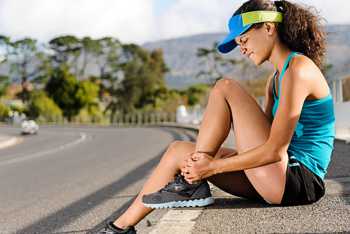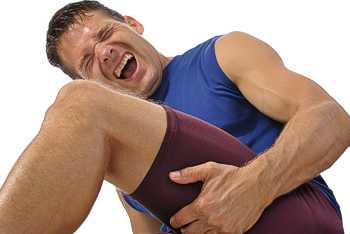 If your serious about developing your physical potential, whether by competitive running, pumping iron in the gym, or even just doing yoga at home you’ll know there’s a whole lot more than seven potential ways in which your body can not only protest but cause some serious grief.
If your serious about developing your physical potential, whether by competitive running, pumping iron in the gym, or even just doing yoga at home you’ll know there’s a whole lot more than seven potential ways in which your body can not only protest but cause some serious grief.
Whatever your genetic strengths or weaknesses, learning to listen and respond to your body’s initial warning signs makes all the difference between a short or long recovery time and is crucial if you want to keep doing what you do well. Here the focus is on some of the most common injuries affecting competitive runners, but the information applies to most physical workouts and regimes.
Runner’s knee accounts for about 40% of all running injuries. It typically strikes on longer runs, while descending hills or stairs, or after prolonged sitting. Almost everyone is at risk. The first solution is to slow down. Take extra rest days and reduce your mileage, running only as far as you can without pain. Running uphill or simulating hills on a treadmill strengthens your glutes, hips and thighs and prevents knees from rolling inwards. Cycling is also good for strengthening your quads and swimming is knee-friendly. If you have knee pain on waking which doesn’t ease up, stop running.
Ironically, aching or tight hamstrings are more common the more flexible you are. Overly stretched muscles make your hams more vulnerable and sitting for long periods can also be a risk factor.
The first step for rehab is to back off. Daily ice packing can help as can wearing compression tights, cycling, swimming and aqua running. Seeing a chiropractor or physio might also be a good idea if the pain and tightness persists.
Tightness of the achillies tendon can occur if you’ve significantly increased your training or have tight, weak calve muscles. Catch it early and it can heal in a few days; if you keep running, recovery could take six months. The cure includes ice packs five times daily and calve strengthening with daily heel drop exercises on a step. Avoid wearing flip-flops and high-heeled shoes. Compression socks can also help.
 Shin splints, are common with novice runners or after extended running layoffs. Basically, the pain is caused by tears in the muscle surrounding the shin. It’s a sign of doing too much too soon. Rest, ice and Ibuprofen will ease the pain, as can an ankle brace or taping. Cross training such as football or tennis which strengthens your muscles with lateral movements can help, as does wearing sport shoes appropriate to your foot shape.
Shin splints, are common with novice runners or after extended running layoffs. Basically, the pain is caused by tears in the muscle surrounding the shin. It’s a sign of doing too much too soon. Rest, ice and Ibuprofen will ease the pain, as can an ankle brace or taping. Cross training such as football or tennis which strengthens your muscles with lateral movements can help, as does wearing sport shoes appropriate to your foot shape.
Iliotibal band syndrome is not the result of listening to too many bad teenage rock groups. It refers to the flexing and extension of the iliotibal muscle band extending from your hip to your knee. Pain in this area is an indicator. Weak hip abductors and gluteal muscles won’t help this often stubborn injury. Rest and reduced mileage, avoiding hiking and cycling can help too, as does swimming and an elliptical trainer, plus massage and ice.
The most common foot issue for runners is plantar fasciitis – tears and inflammation of tendons and ligaments between heels and toes which comprises the area absorbing most force when running. If you have high or very low arches you’re more vulnerable. Tight hip flexors, weak core muscles and lower back pain are also associated as they affect your stride. Just running on through it is no cure. Pool running and swimming help, as does cycling, both of which reduce pressure on your feet. Rolling your foot over a bottle of frozen water for five minutes and sitting with one leg crossed over the other – yoga practitioners should be good at this – is also recommended. However, core muscle strength is critical to avoid spinal stress being transferred to the foot. Pilates exercises could be useful in that case.
Last, but by no means least, are stress fractures. In fact, stress fractures are one of the most serious running injuries around and can take longer to heal than most other injuries – up to 16 weeks depending on location and severity. They mostly occur in the shin, feet or heel bones. X-rays are usually required and the only known cure is to avoid all impact exercises until it is healed. Swimming and aqua running are good options until you can walk or gently jog without pain. The only positive aspect here is that weight bearing exercise is protective in that it strengthens bones and supporting musculature, so, theoretically the longer you’ve been running the less risk of injury.